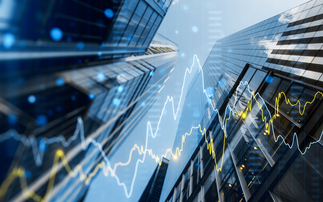One of the most ubiquitous materials in the modern world, steel is used in everything from suspension bridges and skyscrapers to surgical scalpels and cookware. The ready availability of the iron ore from which steel is made and the immense versatility of the finished material have made it integral to the way we live today.
Unlike that other great invention of the industrial age, the internal combustion engine, steel looks set to continue its dominance as we transition to a green future: just about every greenhouse gas mitigation technology requires the use of steel, including electrification, thermal energy, and the hydrogen economy.
However, producing steel is itself a carbon intensive activity which is responsible for around 7% of energy sector CO2 emissions - or closer to 10% if you include the impacts of mining and transporting the required raw materials (it also accounts for 8% of final energy demand).1 Not only that, but the steel industry is a hard to abate sector for which there is no silver bullet currently on offer.
Despite the difficulties involved, cleaning up steelmaking will be critical to the wider success of decarbonisation efforts, a fact that governments globally increasingly recognise. Approximately 74% of steel production comes from countries which have a net-zero target in either existing or draft legislation or policy documents, and that figure is only likely to increase.2 Steel companies therefore face a race to decarbonise before policy changes potentially make their businesses unviable. It is perhaps unsurprising, then, that in recent months four of the top five steel producers have announced intentions to reach net-zero carbon emissions.
Collaboration to reduce emissions across the value chain
Through our stewardship services team, EOS at Federated Hermes, we engage with companies across the steel value chain on decarbonisation, including mining companies, steel producers and their customers, in particular automotive and construction. We engage with mining companies on reducing their own Scope 1 and 2 emissions through two main approaches: 1. Reducing Scope 1 emissions through the transitioning of dig, haul and rail fleets from diesel to electric, hydrogen and fuel cell electric vehicles (EVs) - for the most part this is a longer-term ambition, although mining EVs including huge dumper trucks are being piloted. 2. Reducing Scope 2 emissions by switching from natural gas and coal to renewable energy sources (especially solar) - this creates net savings and is particularly attractive in the short term.
The three routes to decarbonisation
In theory reaching net-zero carbon dioxide emission from steel is possible by combining three main routes: demand management, energy efficiency measures, and decarbonisation technologies.3 As previously mentioned, none of these represent a magic bullet so it makes sense for the industry to pursue all of these solutions in view of the scale of the task.
For the industry as a whole, these three routes will go a long way to mitigating emissions in the short-to-medium term. However, even using carbon capture, utilisation and storage in conjunction with these methods is not expected to eliminate all emissions. Achieving the ultimate goal of net-zero steel is likely to require the eventual replacement of blast furnaces with electric arc furnaces, potentially supplemented by the adoption of electrolysis production. Feedstock for these electric arc furnaces will ideally come from scrap, with hydrogen-produced DRI potentially making up any shortfall until scrap supply can meet demand. Decarbonising the steel industry is far from a simple task, but it is an essential one if we are to achieve a zero-carbon future.
To read more about how the international business of Federated Hermes engages with companies across the steel value chain, read the full edition of Spectrum - decarbonising the global steel industry.
1 "Iron and Steel Technology Roadmap," published by the IEA in October 2020.
2 This is calculated by the international business of Federated Hermes using World Steel Association data from 2020 production by country and Net Zero Tracker | Energy & Climate Intelligence Unit (eciu.net).
3 Energy Transition Commission.
The value of investments and income from them may go down as well as up, and you may not get back the original amount invested. Past performance is not a reliable indicator of future results.
For professional investors only. This is a marketing communication. The views and opinions contained herein are those of Anna Chong, Senior Credit Analyst, Andy Jones, Engagement Professional, Sandy Pei, CFA, Deputy Portfolio Manager, Asia ex-Japan, Sonya Likhtman, Engagement Professional, and Stephan Martin, Director, Global Small & Mid Cap, and may not necessarily represent views expressed or reflected in other communications, strategies or products. The information herein is believed to be reliable, but Federated Hermes does not warrant its completeness or accuracy. No responsibility can be accepted for errors of fact or opinion. This material is not intended to provide and should not be relied on for accounting, legal or tax advice, or investment recommendations. This document has no regard to the specific investment objectives, financial situation or particular needs of any specific recipient. This document is published solely for informational purposes and is not to be construed as a solicitation or an offer to buy or sell any securities or related financial instruments. Figures, unless otherwise indicated, are sourced from Federated Hermes. This document is not investment research and is available to any investment firm wishing to receive it. The distribution of the information contained in this document in certain jurisdictions may be restricted and, accordingly, persons into whose possession this document comes are required to make themselves aware of and to observe such restrictions.
Issued and approved by Hermes Investment Management Limited which is authorised and regulated by the Financial Conduct Authority. Registered address: Sixth Floor, 150 Cheapside, London EC2V 6ET.







